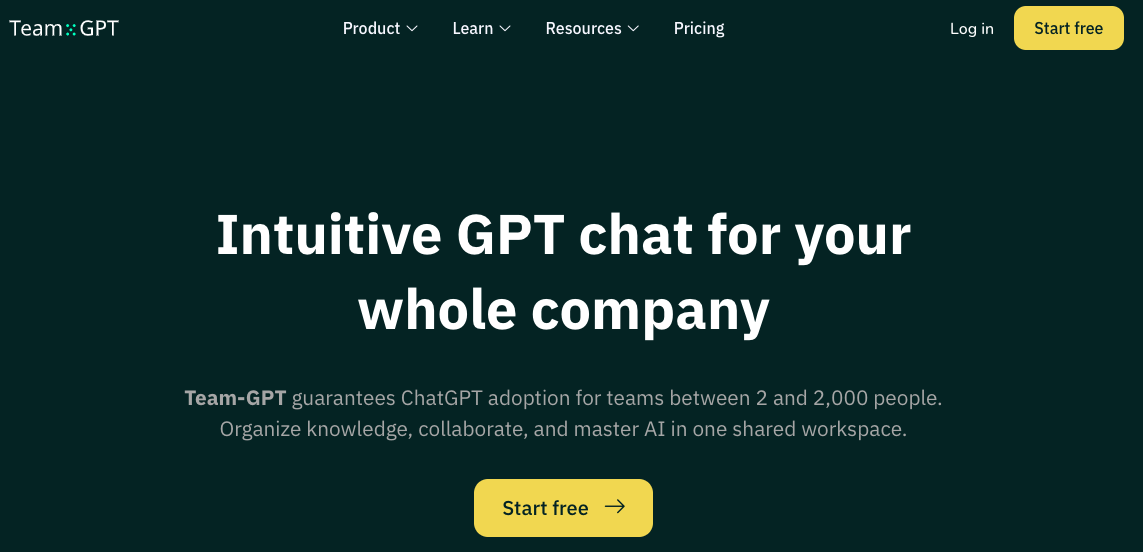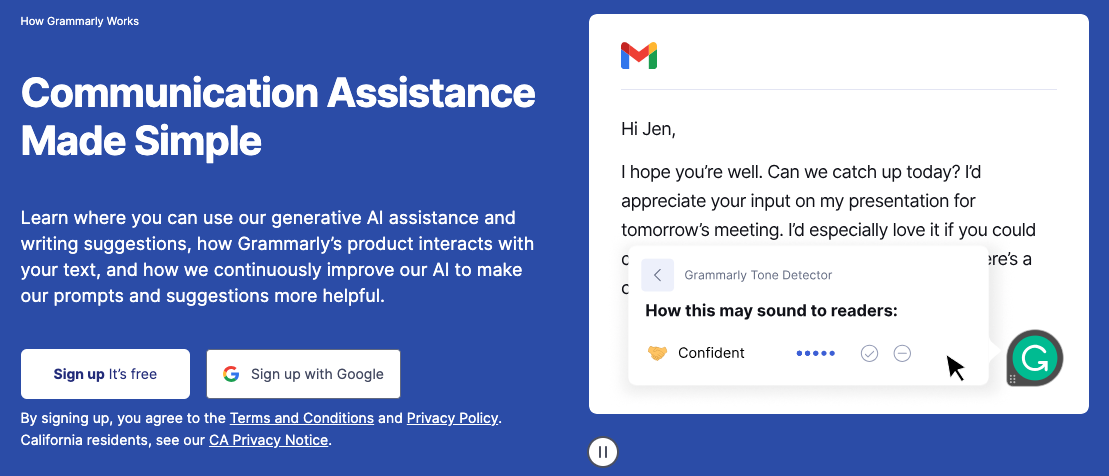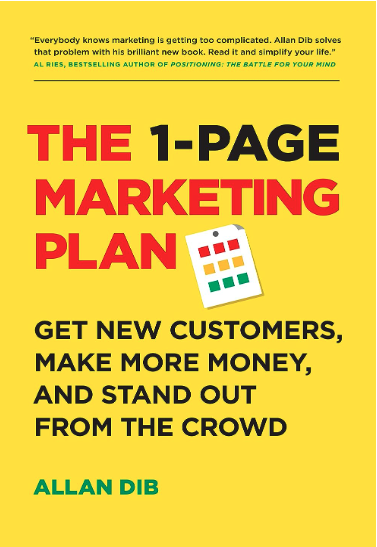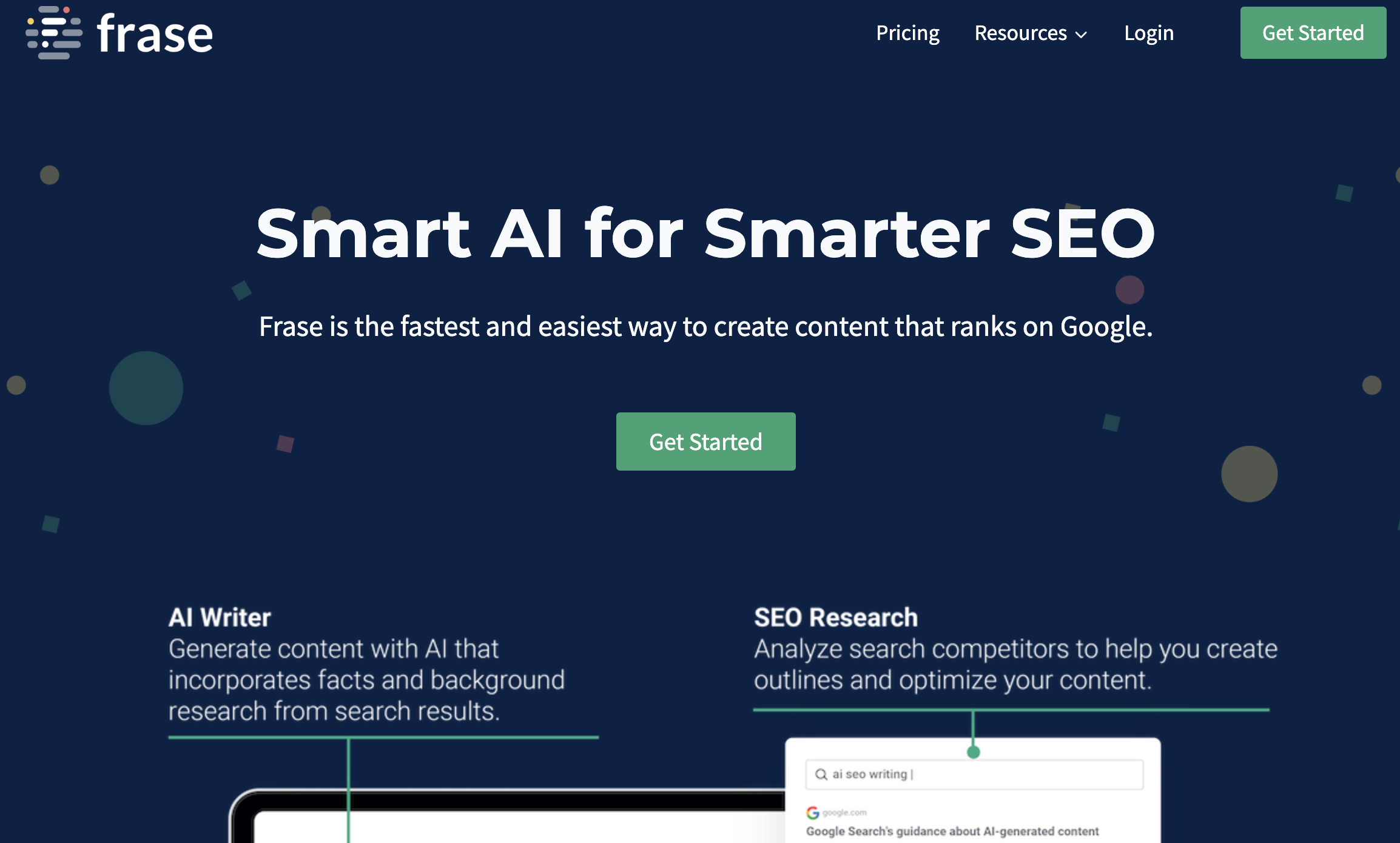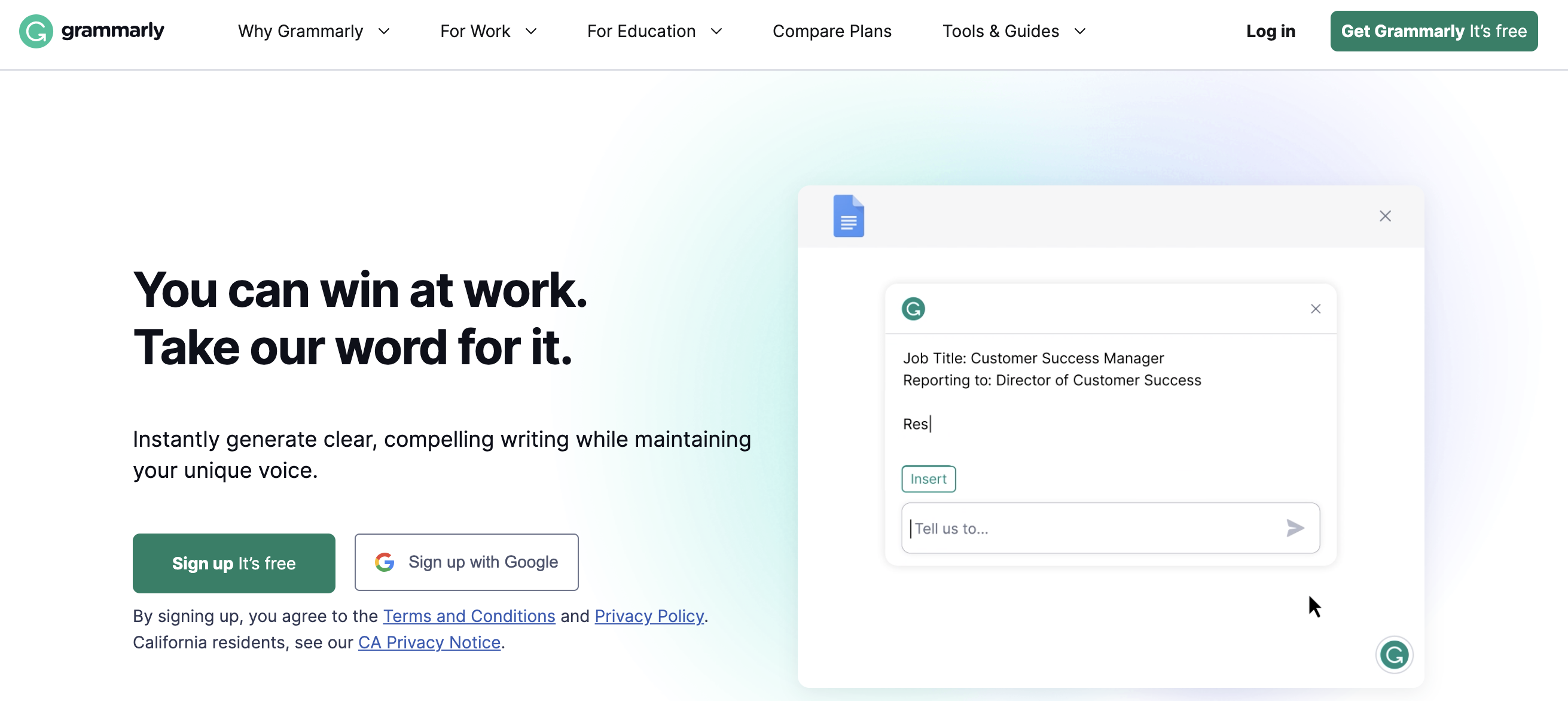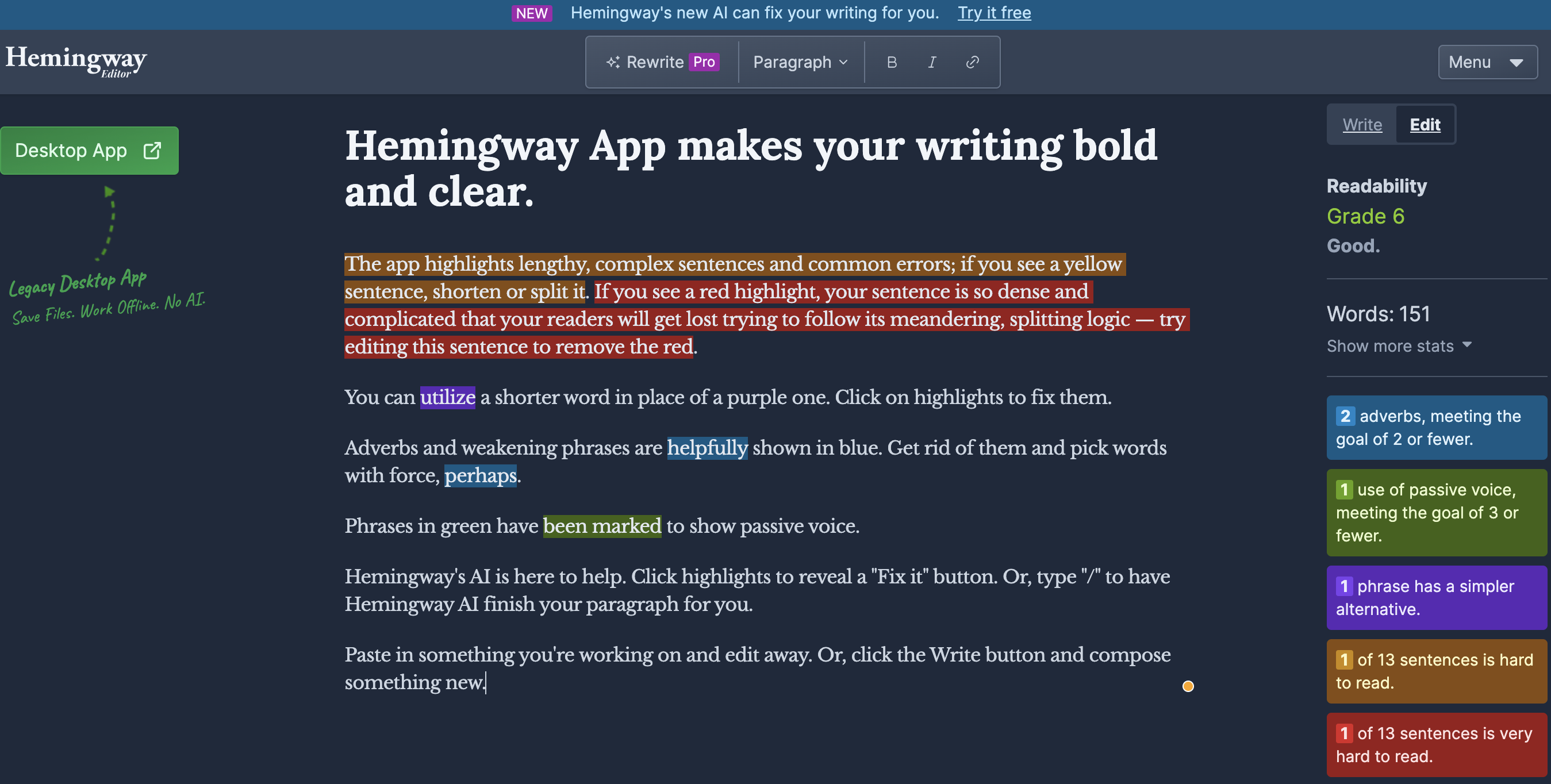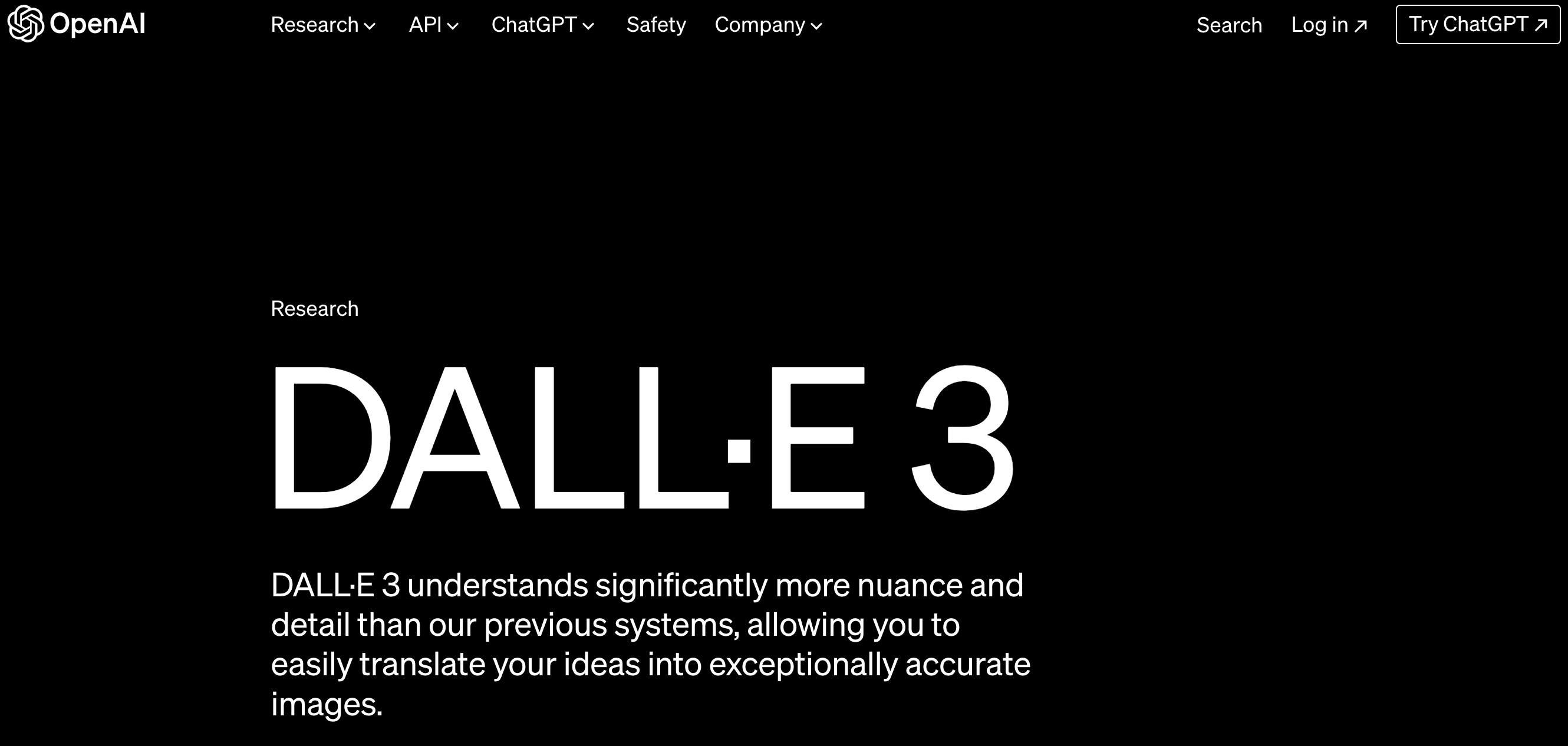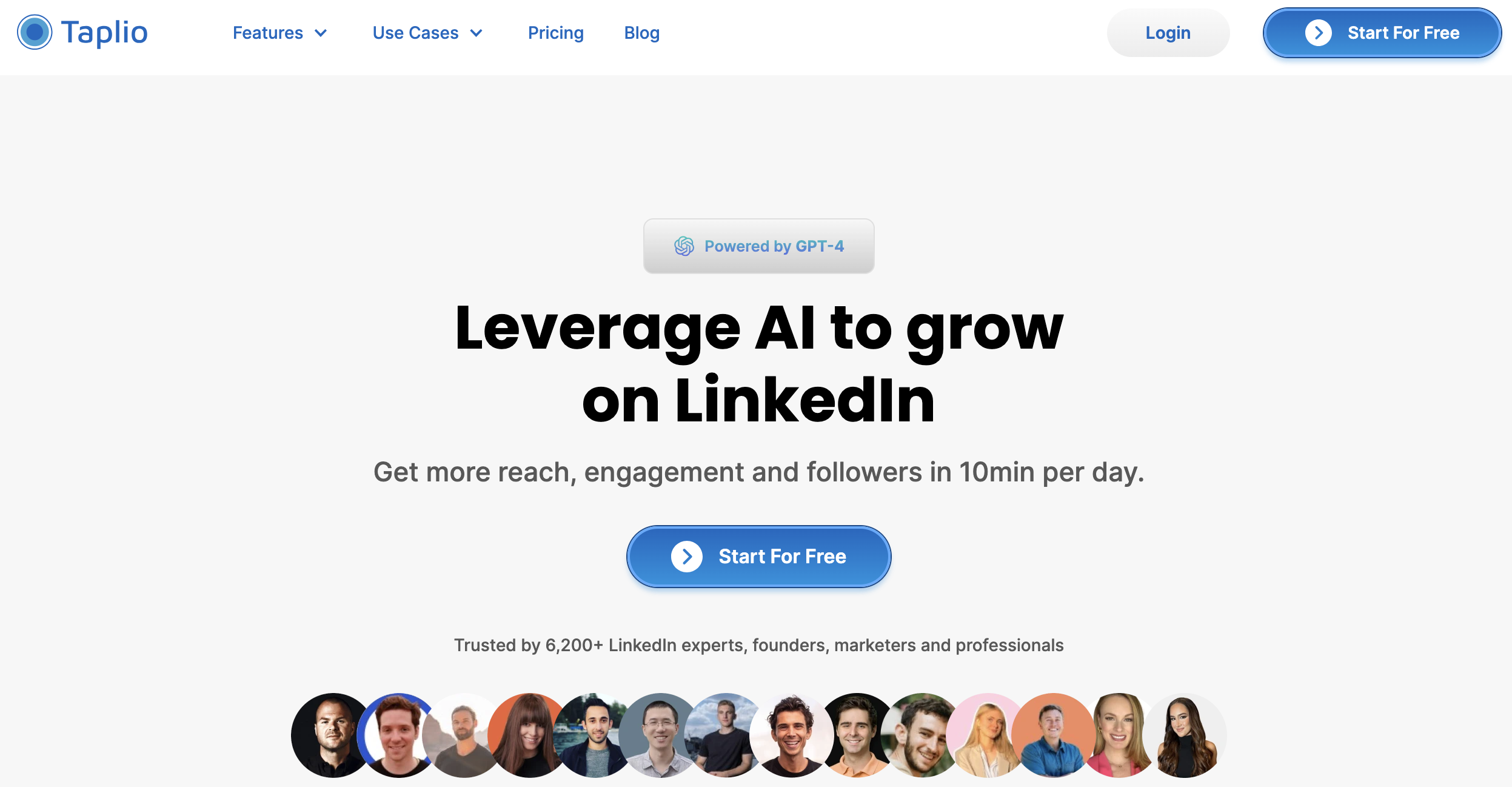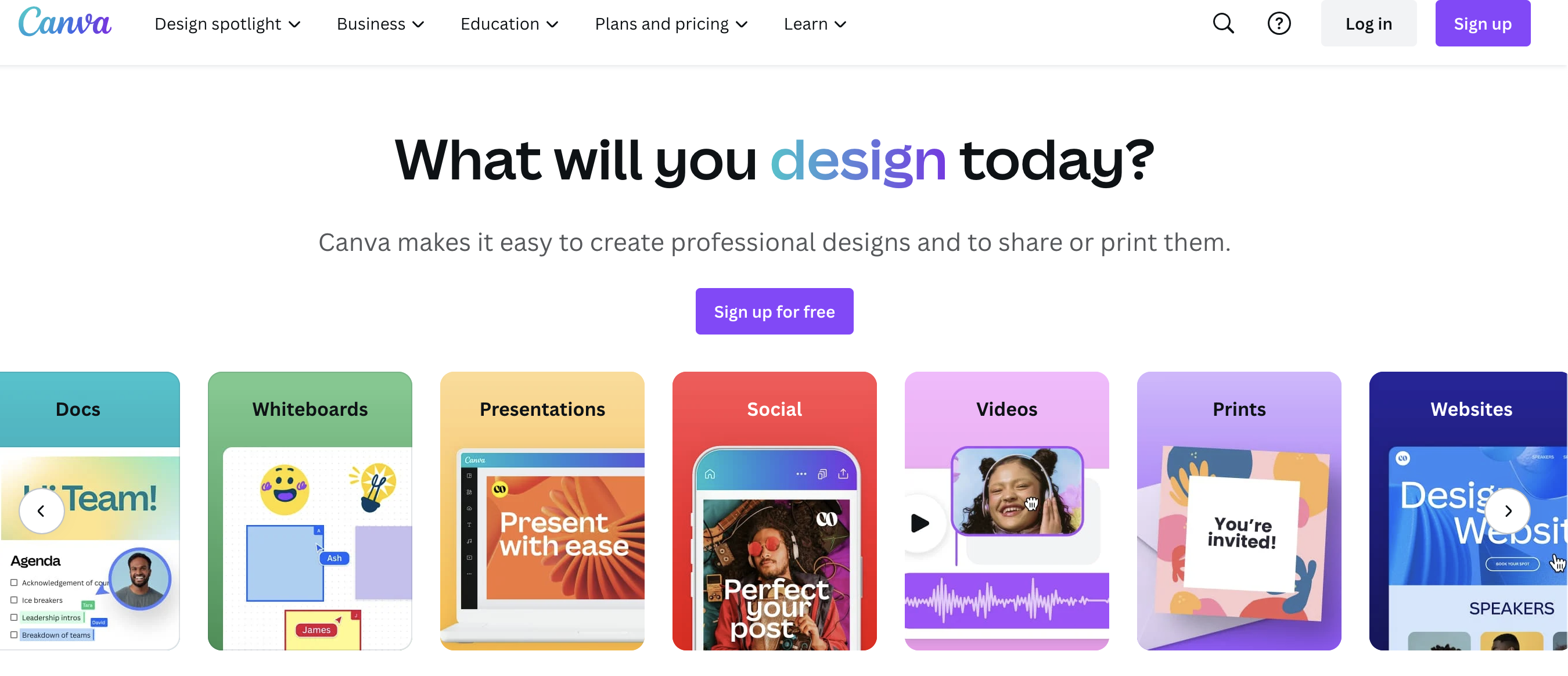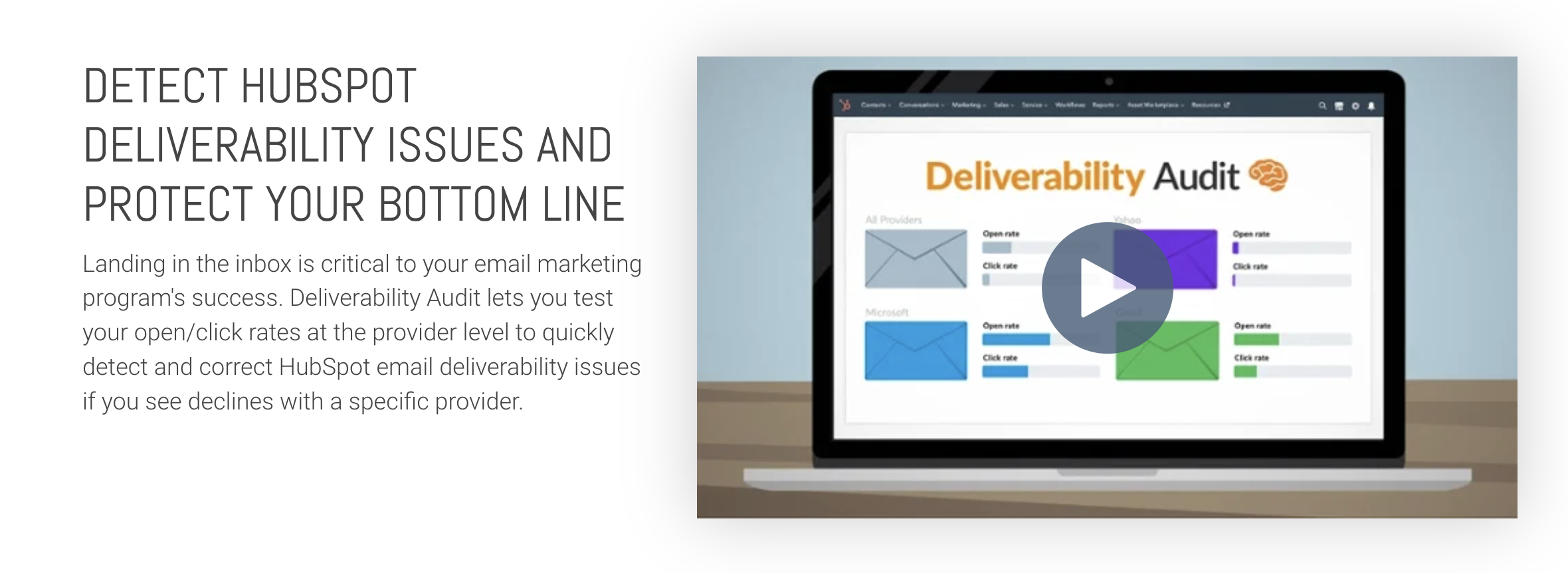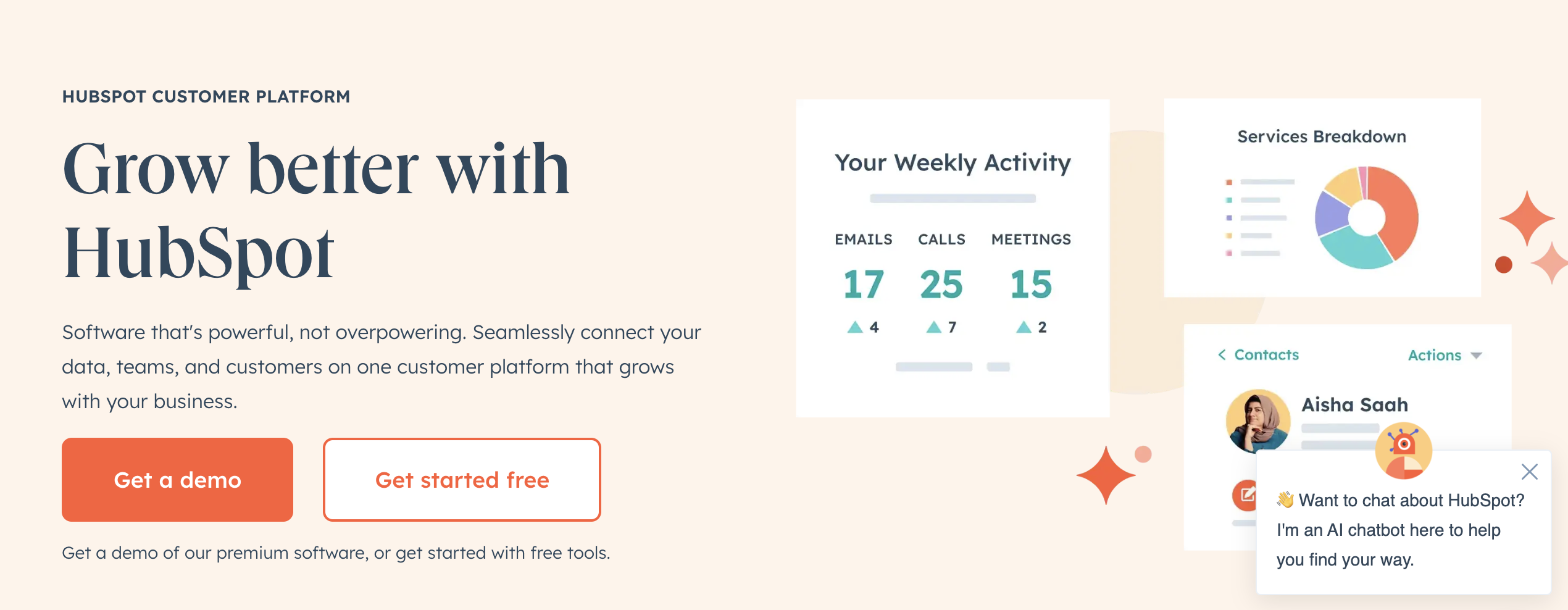StepUp’s annual roundup of the best marketing strategies, tactics, books, podcasts, tools and more — to get you on the track to mastering marketing in 2024.
2023 was a wild year! We witnessed massive global shifts in politics, economics, and social change. Business and technology went along for the ride too, and we’re now raising a glass to the year that saw the rise (and almost fall) of OpenAI, as well as massive shifts in significant industries.
For the good times and the… well, harder times… we’re all taking a moment to raise a glass and bid adieu to 2023. And at StepUp — we take a moment to reflect on our successes and failures, our lessons learned — and our favorite new things.
So, as a holiday gift, we’ve created this “Best Marketing” list. It’s a list of the standout marketing books, podcasts, strategies, and more that we think you should take into 2024. Every item on this list was recommended by a StepUp team member — so you can trust that they’re tried and true!
Enjoy the list and cheers to the new year!
Best Marketing Strategies
Integrating AI in Marketing
What it is: Leveraging artificial intelligence tools to enhance customer engagement and optimize marketing processes.
Why it matters: AI offers unmatched efficiency in personalizing customer experiences and analyzing big data for better decision-making.
How to implement: Start by adopting AI-driven analytics tools for customer segmentation and targeting in your marketing campaigns.
Starting with the Bottom of the Funnel (BOFU)
What it is: Focusing on leads at the decision stage of their journey rather than the top of the funnel.
Why it matters: This approach efficiently converts ready-to-buy leads, maximizing ROI on marketing efforts.
How to implement: Create targeted content and offers for leads showing clear purchase intent, enhancing their decision-making process.
Personalization
What It Is: Advanced personalization using AI and analytics to tailor content and solutions to each client’s specific needs.
Why It Matters: As the market gets more competitive, personalized marketing will be key to standing out and engaging business clients effectively.
How to Implement: Personalization tactics are usually available within marketing tools such as HubSpot.
Each of these strategies is all about making your marketing smarter, more focused, and more in tune with what your B2B target audience needs and wants. It’s about honing in on communicating effectively with your audience — focus on that and implement these tactics for success!
Best Marketing Tactics (for Early-Stage B2Bs)
2024 is poised to be a year of innovation and efficiency in B2B marketing. For early-stage B2B companies, leveraging the right tactics is crucial for growth and market penetration. Here are some top strategies to consider:
Data-Driven Marketing
What It Is: Using customer data to guide marketing decisions and strategies.
Why It Matters: Data-driven marketing allows for more targeted, relevant, and effective marketing efforts.
How to Implement: Begin by collecting first-party data through your digital channels. Analyze this data to understand customer behaviors and preferences, and utilize marketing automation tools for personalized communication. Implement ABM strategies to focus on high-value accounts and use intent data to target potential customers showing interest in your offerings.
Direct Message Outreach Marketing
What It Is: Using direct messaging platforms, such as LinkedIn, to personally reach out to potential customers or partners.
Why It Matters: This approach allows for personalized, one-on-one interactions that can build stronger business relationships.
How to Implement: Identify potential leads or partners on professional platforms and craft personalized messages that speak to their specific needs or interests. It’s important to be genuine and offer real value in these communications, avoiding a sales-heavy approach.
Up-to-Date SEO (Search Engine Optimization) Tactics:
What It Is: Implementing the latest SEO strategies to improve your website’s visibility and ranking on search engines.
Why It Matters: With constant updates to search engine algorithms, staying current with SEO practices is essential to ensure your content reaches its intended audience.
How to Implement: Focus on creating high-quality, relevant content that addresses your audience’s needs. Keep abreast of the latest SEO trends, like voice search optimization and mobile-first indexing. Use tools to analyze your website’s performance and continually optimize your content and site structure for better search engine ranking.
These tactics, when effectively implemented, can help early-stage B2B companies make significant inroads in their respective target markets. By focusing on data-driven strategies, personalized outreach, and staying current with SEO practices, your business can build a strong foundation for growth and success in 2024.
Best Marketing Tech (with or without AI)
HubSpot
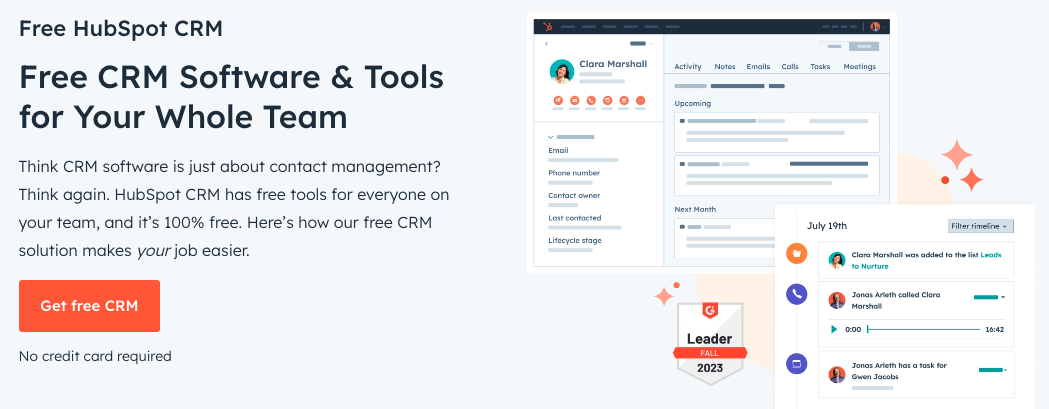
HubSpot is a vital tool for early-stage B2B companies, featuring a robust CRM system and integrated marketing tools. It facilitates seamless collaboration between sales and marketing teams and provides detailed analytics for the entire sales funnel. Additionally, its extensive knowledge base offers substantial learning and support resources.
- Centralized CRM: Manages customer interactions in one location.
- Marketing Integration: Unified tools for streamlined viewing and management of marketing campaigns.
- Sales Alignment: Enhances teamwork between sales and marketing.
- Funnel Analytics: Visibility across the entire sales funnel.
- Knowledge Base: Comprehensive resources for learning and support.
For more details, visit HubSpot.
SEMRush
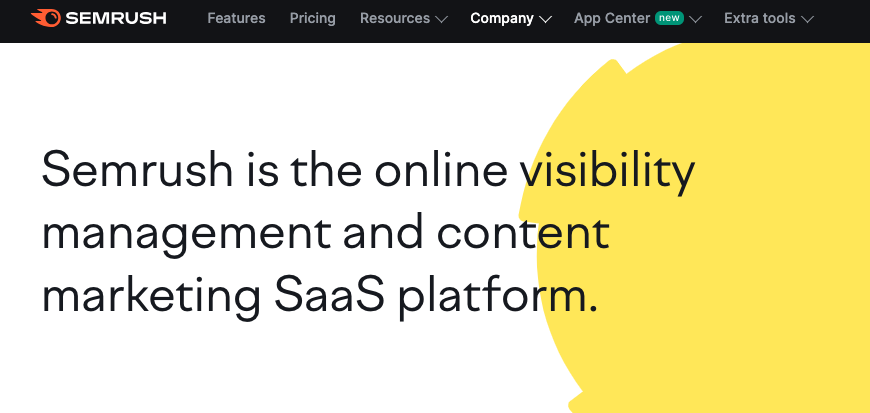
SEMRush is an indispensable asset for early-stage B2B companies, offering comprehensive digital marketing solutions. It’s particularly effective for SEO, content marketing, and competitive research, providing vital tools for keyword research and site audits. The platform’s depth in competitive analysis and detailed analytics equips businesses with actionable insights to enhance their online marketing strategies.
- SEO and Content Tools: Offers comprehensive resources for keyword research and content optimization.
- Competitive Analysis: Provides in-depth insights into market competition.
- Comprehensive Analytics: Detailed data for informed marketing decisions.
- Site Audits: Tools for optimizing website performance.
- Market Research: Invaluable insights into industry trends and customer behavior.
For more details, visit SEMRush.
Canva
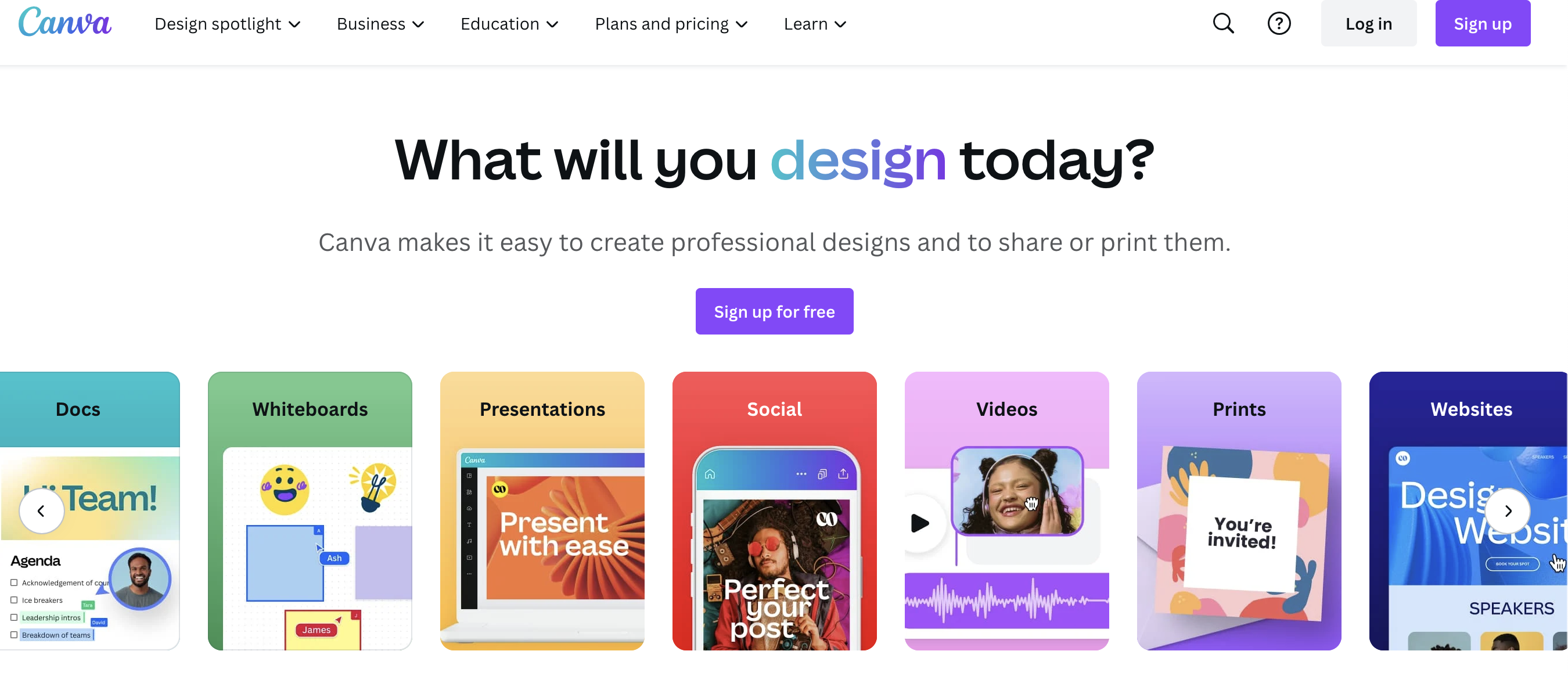
Canva is a key resource for early-stage B2B companies, providing an intuitive platform for creating professional-grade marketing materials. It’s ideal for designing everything from graphics for your social media channels to presentations, offering a vast library of templates and design elements. Canva simplifies graphic design, making it accessible to all skill levels and enhancing the visual appeal of marketing campaigns.
- Intuitive Design Platform: User-friendly interface for easy graphic creation.
- Vast Template Library: Wide range of templates for various design needs.
- Graphic Resources: Extensive collection of images and design elements.
- Cross-Functional Use: Suitable for a variety of marketing materials.
- Accessibility: Enables professional designs without specialized skills.
For more details, visit Canva.
Best Marketing AI Tools
Team GPT
Team GPT is an innovative platform designed to enhance team collaboration using ChatGPT technology. It is a game-changer for businesses, enabling efficient organization and sharing of AI-generated insights.
- AI-Powered Collaboration: Facilitates team interaction and idea generation using AI.
- Organizational Tools: Streamlines chat management with folders and templates.
- Knowledge Sharing: Simplifies sharing AI-generated insights among team members.
- Enhanced Productivity: Boosts team efficiency with AI assistance.
- User-Friendly Interface: Easy-to-use platform for all team sizes.
For more information, visit Team GPT.
Frase
Frase is an advanced AI content tool designed for SEO optimization and efficient content creation. It’s a valuable asset for enhancing the quality and searchability of digital content.
- SEO Optimization: Automated tools for optimizing content for search engines.
- AI Writing Assistant: Streamlines content creation with AI-driven suggestions.
- Content Research: In-depth SERP analysis for content planning.
- Outline Generation: Simplifies structuring content for better engagement.
- User-Friendly Editor: Intuitive interface for easy content creation and editing.
For more details, visit Frase.
Grammarly
Grammarly leverages advanced AI to enhance writing quality across various platforms. It’s particularly beneficial for those needing assistance with grammar and style. Its AI features include:
- Advanced Grammar and Style Checks: AI algorithms provide real-time, context-specific writing suggestions.
- Customizable Feedback: Tailors suggestions based on writing goals and style preferences.
- Contextual Language Understanding: The AI understands nuances in language, offering precise corrections and improvements.
Grammarly’s AI capabilities make it a powerful tool for anyone looking to refine their written communication.
For more details, visit Grammarly.
Best Marketing Blogs
Exit Five

Exit Five, founded by marketing expert Dave Gerhardt, is a blog that caters to B2B marketing professionals. It stands out for its:
- Community-driven insights from a network of marketing professionals.
- Actionable advice tailored for practical application.
- Diverse perspectives shared by various industry experts.
This blog is a valuable resource for B2B marketers looking to deepen their knowledge and stay current with industry trends.
For further details, visit Exit Five.
The HubSpot Blog
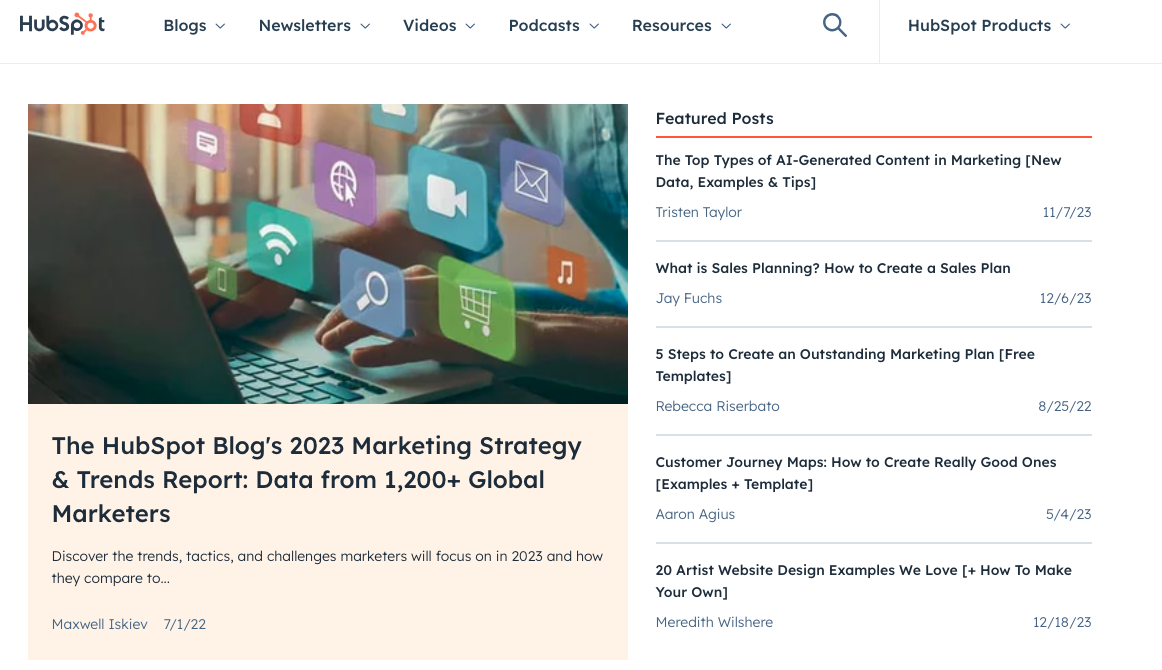
The HubSpot Blog, renowned for its expertise in inbound marketing, is crafted by the HubSpot team, leaders in marketing software. It’s a go-to resource for:
- Comprehensive insights into B2B marketing strategies.
- Expert advice on CRM integration and lead nurturing.
- In-depth knowledge on attracting leads through content creation.
This blog is ideal for marketers seeking to expand their skills and keep up with the latest in marketing trends.
For more insights, visit the HubSpot Blog.
MarketingProfs
MarketingProfs is a comprehensive resource for B2B marketers, offering hundreds of blog posts and a wealth of information and expert advice. It’s tailored for marketing professionals at all levels who seek strategic insights and practical guidance. The blog is known for:
- Delivering in-depth coverage of various B2B marketing strategies and tactics.
- Providing both free and premium content, including articles, guides, and case studies.
- Covering a wide range of topics, from content marketing to digital marketing strategies.
For more information and insights, visit MarketingProfs.
Best Marketing Books
The 1-Page Marketing Plan
“The 1-Page Marketing Plan” by Allan Dib is a concise guide that simplifies the marketing planning process into a single page, making it accessible for businesses of all sizes. It focuses on creating a clear and actionable marketing plan that helps businesses attract more customers and generate more revenue. This book is highly recommended for its practical approach and easy-to-follow format, making it a valuable resource for entrepreneurs and marketers seeking to improve their marketing strategies.
Find more details on Amazon.
They Ask, You Answer
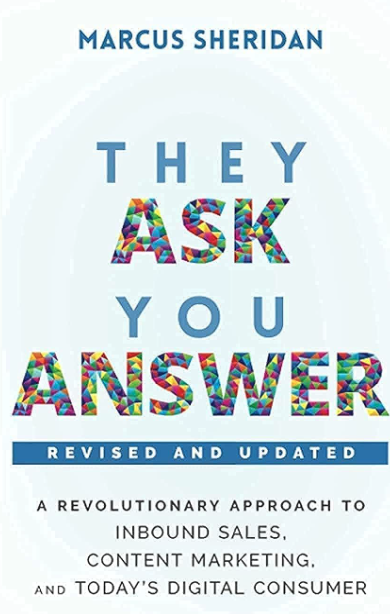
“They Ask, You Answer” by Marcus Sheridan is a revolutionary guide to content marketing. It advocates for a customer-centric approach, advising businesses to address the real questions and concerns of their customers through their content. This book is essential for marketers and business owners looking to build trust and authority with their target audience through transparency and helpfulness.
Discover more on Amazon.
“He reflects, in the best way, what marketing is. Simply put, it’s a conversation between a buyer and a seller. They ask, we answer. It’s a complex field made very simple. Just answer every question your potential buyer has, and you have great marketing!” — Moshe Pesach, CEO StepUp
The 22 Immutable Laws of Marketing
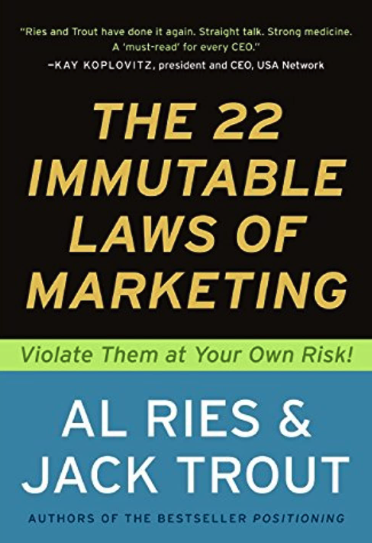 “The 22 Immutable Laws of Marketing” by Al Ries and Jack Trout offers a timeless perspective on essential marketing principles. It lays out clear, fundamental rules for successful marketing strategies, emphasizing the importance of understanding market dynamics and consumer perception. Recommended for its insightful, straightforward approach, this book is a must-read for marketers aiming to build a solid foundation in the fundamentals of marketing strategy.
“The 22 Immutable Laws of Marketing” by Al Ries and Jack Trout offers a timeless perspective on essential marketing principles. It lays out clear, fundamental rules for successful marketing strategies, emphasizing the importance of understanding market dynamics and consumer perception. Recommended for its insightful, straightforward approach, this book is a must-read for marketers aiming to build a solid foundation in the fundamentals of marketing strategy.
More details are available on Amazon.
P.S. Our team’s favorite law is the Law of Duality. Tell us which is yours!
Best Marketing Podcasts
Marketing School

“Marketing School” is a podcast hosted by digital marketing experts Neil Patel and Eric Siu. It provides daily, bite-sized episodes packed with actionable marketing tips, strategies, and insights. This podcast is ideal for marketers and business owners looking to stay updated on the latest trends and tactics in digital marketing. The podcast is known for its straightforward, practical advice that listeners can quickly implement in their marketing efforts.
For more information and episodes, visit Marketing School.
Exit Five Podcast
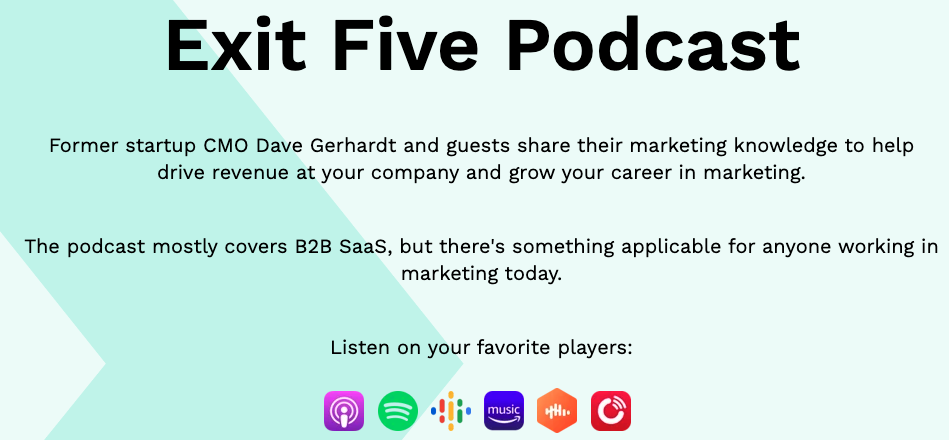
The Exit Five Podcast, associated with the Exit Five community for B2B marketers, features in-depth discussions and interviews with marketing leaders and experts. It’s a valuable resource for marketers seeking insights into the latest trends, strategies, and real-world experiences in the B2B marketing sphere. The podcast covers a wide range of topics, offering listeners practical advice and innovative ideas to enhance their marketing strategies.
For more episodes and information, visit the Exit Five Podcast.
Duct Tape Marketing Podcast

The Duct Tape Marketing Podcast, hosted by John Jantsch, is a valuable resource for small business owners and marketers. It offers interviews and insights from industry experts, covering a variety of topics essential for effective small business marketing. This podcast is known for its practical advice, focusing on strategies and tactics that businesses can apply to improve their marketing efforts and grow their ideal customer base.
For more details and episodes, visit the Duct Tape Marketing Podcast.
–
Wrapping up our exploration into the latest in B2B marketing, we’ve gained a wealth of knowledge that’s both exciting and invaluable. As we step into the new year, we’re equipped with fresh insights and energized to continue our learning journey. We’re looking forward to sharing more practical resources and strategies, helping us all to grow and excel in the ever-evolving landscape of marketing. Here’s to embracing new opportunities for learning and growth in the upcoming year!


